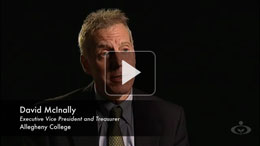The U.S. National Climate Assessment
By Jim Buizer, Deputy Director for Climate Adaptation and International Development, Institute of the Environment, University of Arizona and Member, Executive Secretariat, NCADAC
(This article appears in the December, 2011 issue of The ACUPCC Implementer)
Adapting to the impacts of climate changes already underway, and projected to continue to increase over this century, is critical to ensuring that our nation's social and economic sectors can be resilient to these impacts. In recognition of the significance of climate change to the long-term wellbeing of the United States, the Federal Government is currently conducting the Third National Climate Assessment (NCA). The NCA is Congressionally mandated under the Global Change Research Act of 1990 and is to be undertaken approximately every 4 years. Administered by the White House Office of Science and Technology Policy, and with support from the 18-Agency U.S. Global Change Research Program, the NCA is based on both peer-reviewed, scientifically produced knowledge and verifiable experiential knowledge coming from outside the research community. Due at the end of 2013, the report will be a snapshot of what is known about climate change science and impacts. It will shed light on options for adaptation to impacts of climate change; it will also recognize and communicate mitigation activities underway across the nation in order to prevent even greater climatic changes.
An NCA Office in Washington, D.C. coordinates the activities, and manages the advice and input of a Development and Advisory Committee (NCADAC), consisting of 60 experts appointed and chartered by the Secretary of Commerce, and drawn from academia, federal and state governments, industry and non-governmental associations. In addition to the NCADAC, the Office will rely heavily on input from across the country.
- Read more about The U.S. National Climate Assessment
- Add new comment









 The higher education sector in the US is responsible for many of the world’s most influential ideas, values, and leaders. With a critical mass of these institutions — nearly 700 strong, representing 6 million students — now making real progress towards climate neutrality, the ACUPCC is laying an important foundation in creating the clean, green economy.
The higher education sector in the US is responsible for many of the world’s most influential ideas, values, and leaders. With a critical mass of these institutions — nearly 700 strong, representing 6 million students — now making real progress towards climate neutrality, the ACUPCC is laying an important foundation in creating the clean, green economy.
